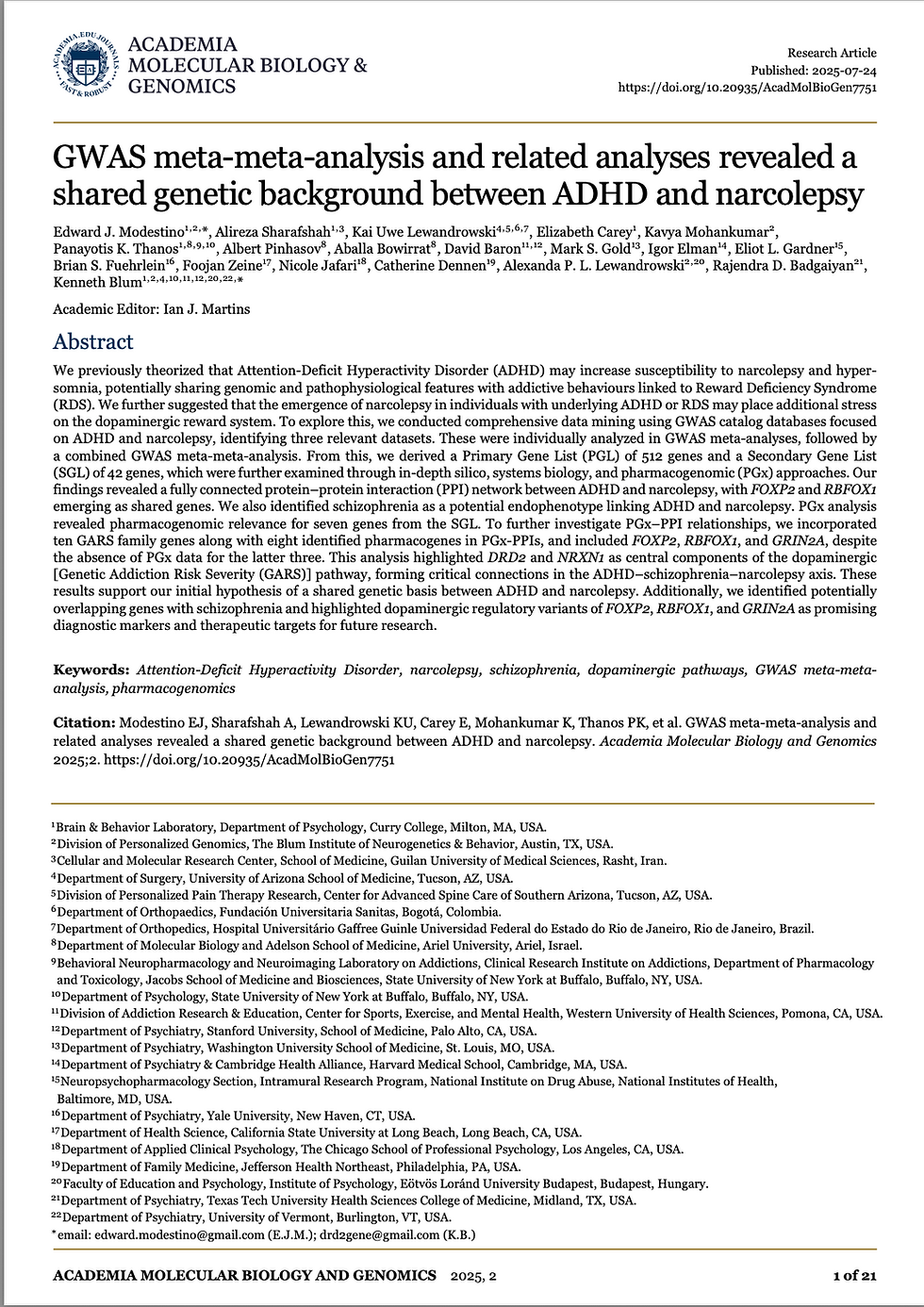Conceptualizing Borderline Personality Disorder
- Edward Justin Modestino, Ph.D.

- Dec 28, 2024
- 3 min read

Borderline Personality Disorder is a difficult disorder to both diagnose and to treat effectively. Many professionals will say that it is not treatable at all. Typically, the first line of treatment is usually beginning with psychotherapy. This leads into Dialectal Behavior therapy which focuses in controlling strong emotions and reducing self-harming behaviors. Additionally, CBT and medication can provide treatment options as well. The Diagnostic and Statistical Manual of Mental Disorders (DSM-5-TR) provides detailed diagnostic criteria for Borderline Personality Disorder (BPD). BPD is a complex an often misunderstood and complex personality disorder. A variety of symptoms can present themselves in several areas. These can include interpersonal relationships, impulsivity, self-harming, abandonment issues, and in some severe cases paranoid thoughts and dissociative states. These are marked by pervasive instability in interpersonal relationships, self-image, emotions, and coupled with marked impulsivity. Dr. Sam Vaknin’s video, New Light on Borderline Personality Disorder, gives us a good overview of the DSM5-TR, the clinical criteria for BDP, and the Alternative DSM-5 Model for Personality Disorders or ‘AMPD”. In this paper, I would like to highlight three major points between the DSM-5-TR criteria and broader ideas surrounding the diagnosis and treatment of BDP. This more shifts away from a diagnosis based solely on symptoms, but to more of a multi-dimensional assessment. The AMPD model gives a more complete overview of a patient’s personality traits and a deeper look at individuals vary in pathology and diagnosis.
When you look at DSM-5-TR clinical criteria for BPD, it mostly relies on a more clear-cut approach. This being the client in question showing five out of the nine specific symptoms listed. These can include impulsivity, abandonment issues, extreme mood swings and suicidal ideation. This approach is clear and obviously very orderly, but some clinicians have found fault with just relying on DSM criteria. Many are asking the question if we are oversimplifying a complex and varied condition and thus leading to a possible leading to a misdiagnosis or a potential diagnosis comorbid with another psychiatric condition. However, the AMPD model has a more varied approach. This approach is more multi-dimensional and flexible. This approach allows clinicians to give. a more complete overview of the patient’s personality and give additional avenues for treatment planning and communication. emphasizing the severity and range of traits rather than a binary presence or absence of symptoms. There are several traits that AMPD uses to evaluate a patient. Some of these are looking at emotional dysregulation and interpersonal dysfunction.
In the DSM-5-TR criteria there is more of a focus on symptoms can be observed, which may lead to a smaller focus on underlying conditions and personality dysfunction. The AMPD model puts focus on interpersonal relations and personality impairments. As an example, this can be helpful for treatment in several areas like self-image, the ability to maintain close relationships and chronic feelings of emptiness or feeling the need to seek a new job, place, or environment constantly. By examining these deficiencies, we can gain additional insight into what drives BPD symptoms and how we can treat this more holistically.
The AMPD model acknowledges that many personality disorders, including BPD, manifest differently depending on the individual. This is influenced by psychological, biological, and social factors. Dr. Vaknin’s critique of the limited DSM criteria aligns with emphasizing the importance of looking at this disorder within a broader framework. The idea behind this model is when we focus more on each individual client instead of a one-size-fits-all diagnosis we can tailor the unique needs of the client.



Comments